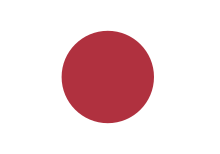Loading AI tools
Combined military forces of the Empire of Japan From Wikipedia, the free encyclopedia
The Imperial Japanese Armed Forces (IJAF, full Japanese: 大日本帝国陸軍, romanized: Dainipponteikoku rikugun or Nippon-gun (日本軍) by short which by meaning "Japanese army") were the unified forces of the Empire of Japan. Formed during the Meiji Restoration in 1868,[1] they were disbanded in 1945, shortly after Japan's defeat to the Allies of World War II; the revised Constitution of Japan, drafted during the Allied occupation of Japan, replaced the IJAF with the present-day Japan Self-Defense Forces.[2]
You can help expand this article with text translated from the corresponding article in Japanese. (February 2018) Click [show] for important translation instructions.
|
| Imperial Japanese Armed Forces | |
|---|---|
| 大日本帝国陸軍/日本軍 | |
 | |
| Founded | 3 January 1868[1] |
| Disbanded | November 1945 |
| Service branches | |
| Headquarters | Imperial General Headquarters |
| Leadership | |
| Emperor of Japan | Meiji (1868–1912) Taishō (1912–1926) Hirohito (1926–1945) |
| Personnel | |
| Conscription | 18–35 |
| Related articles | |
| History | Military history of Japan |
| Ranks | Army ranks Navy ranks |
The Imperial Japanese Army and the Imperial Japanese Navy functioned as the IJAF's primary service branches, with the country's aerial power being split between the Army Air Service under the former and the Navy Air Service under the latter.
This section needs expansion. You can help by adding to it. (December 2021) |
The IJAF was founded with an edict emanated on 3 January 1868, as part of the Japanese reorganization of the army and the application of innovations during the Meiji Restoration. The reorganization of the army and the navy during the Meiji period boosted Japanese military strength, allowing the Imperial Japanese Army and the Imperial Japanese Navy to achieve major victories, such as during the First Sino-Japanese war and the Russo-Japanese War.
The IJAF also served in WW1 and WW2. It was operational until the Surrender of Japan after World War II in 1945.
This section needs expansion. You can help by adding to it. (December 2021) |
During the pre-war era the army and navy had separate school branches.[3] Since the Meiji era, the Choshu Domain from Yamaguchi Prefecture dominated the IJA.[3] The IJN was dominated by the Satsuma Domain from Kagoshima Prefecture.[3] This resulted in that they operated separately rather than a single umbrella strategy.[3]
During the Showa period, the IJA and IJN had different outlooks on allies and enemies.[3] The IJA considered Nazi Germany as a natural partner and the Soviet Union as a threat, while the IJN stressed that collaboration with Nazi Germany would hurt relations with the United Kingdom and the United States.[3]
Some equipment was also procured separately.[3] For example, the IJA secured its own ships and self-designed submarines in World War 2.[3] Former Prime Minister Shigeru Yoshida criticized the sectionalism of the IJAF.[3]
The Imperial Army and Navy had a fierce interservice rivalry centering around how the Imperial Japanese Armed Forces ought to secure territories containing valuable natural resources not available at home to fuel and grow the Japanese economy. The Army mainly supported the Hokushin-ron doctrine, which called for expansion into Manchuria and Siberia and would have the army take on a prime role, while the Navy supported the Nanshin-ron doctrine, which stated that Japan ought to expand into Southeast Asia and the Pacific Islands and would be reliant on the navy to do so.
Seamless Wikipedia browsing. On steroids.
Every time you click a link to Wikipedia, Wiktionary or Wikiquote in your browser's search results, it will show the modern Wikiwand interface.
Wikiwand extension is a five stars, simple, with minimum permission required to keep your browsing private, safe and transparent.